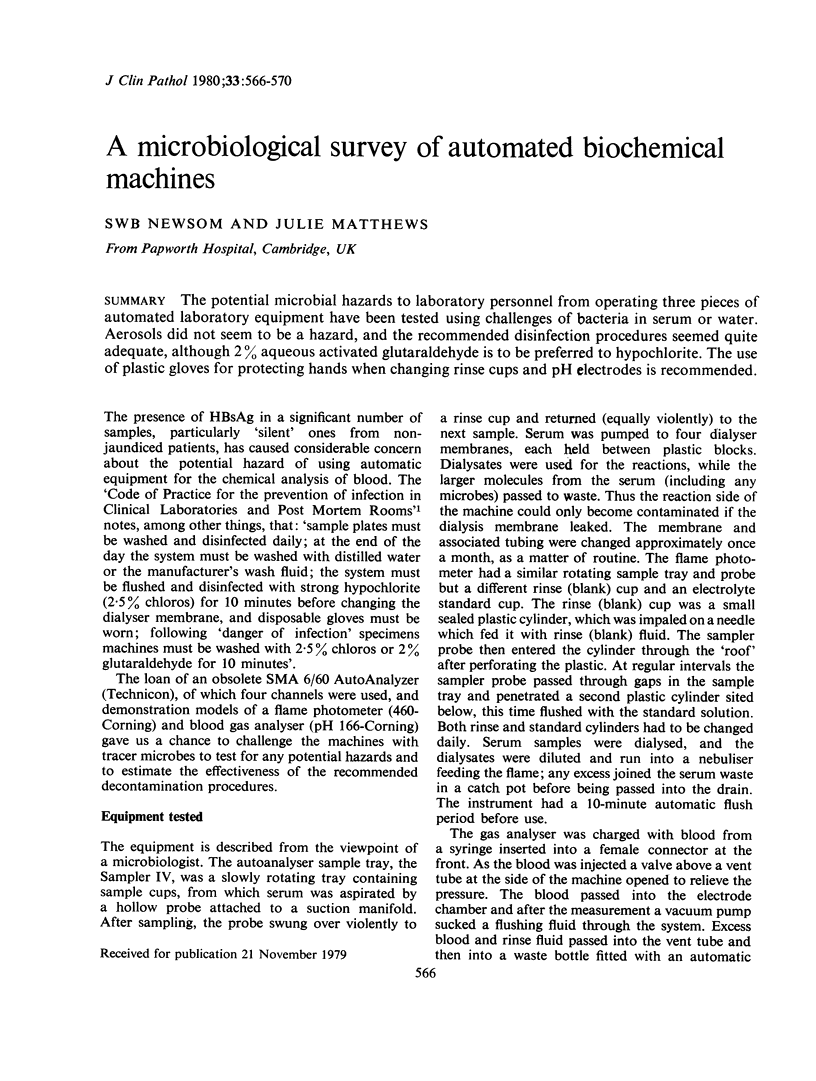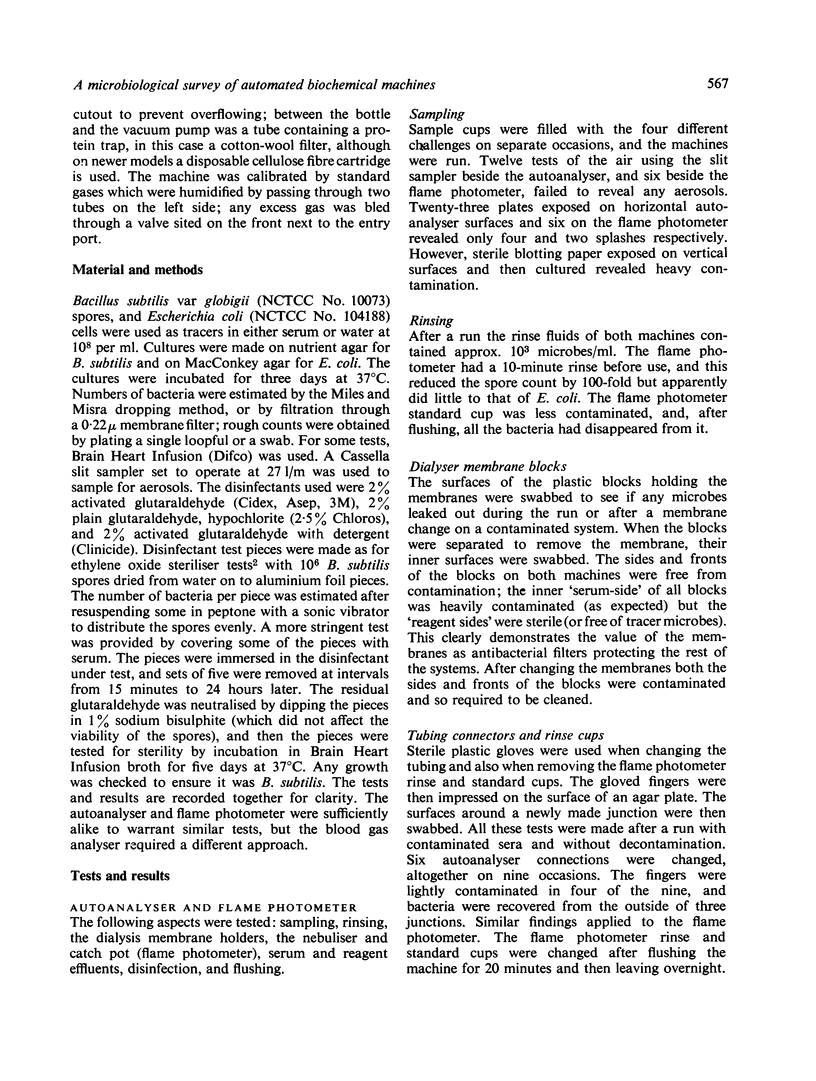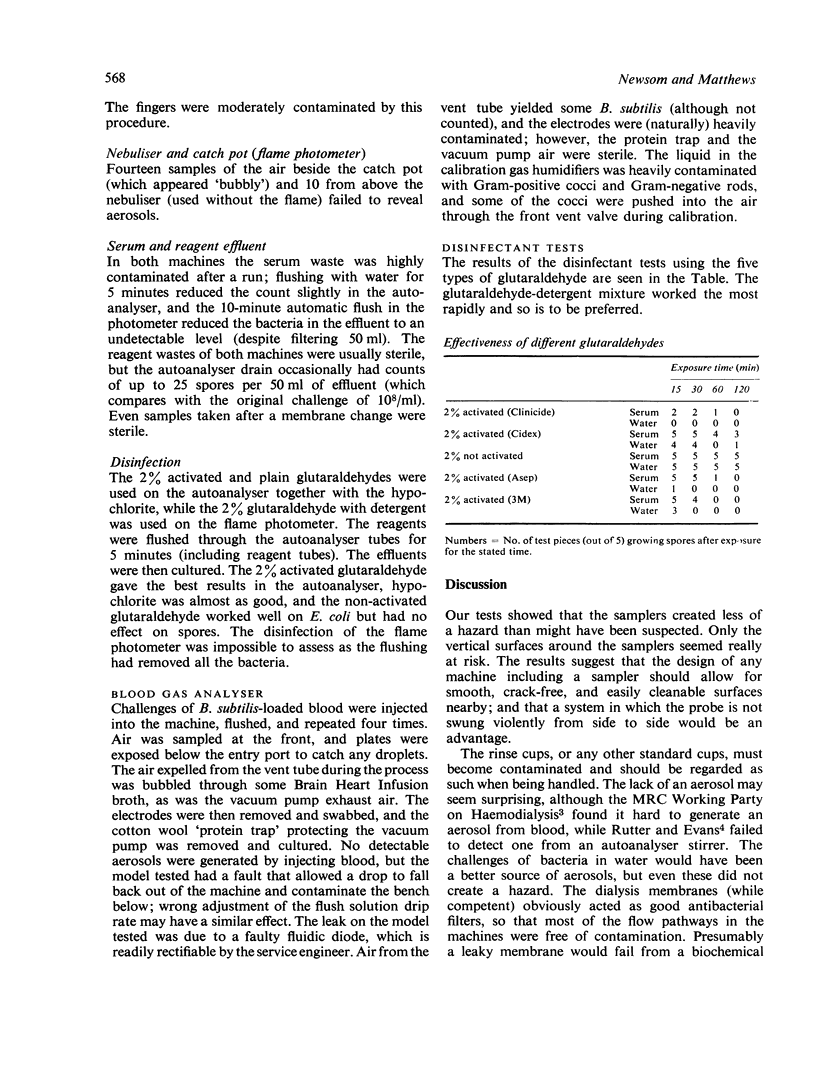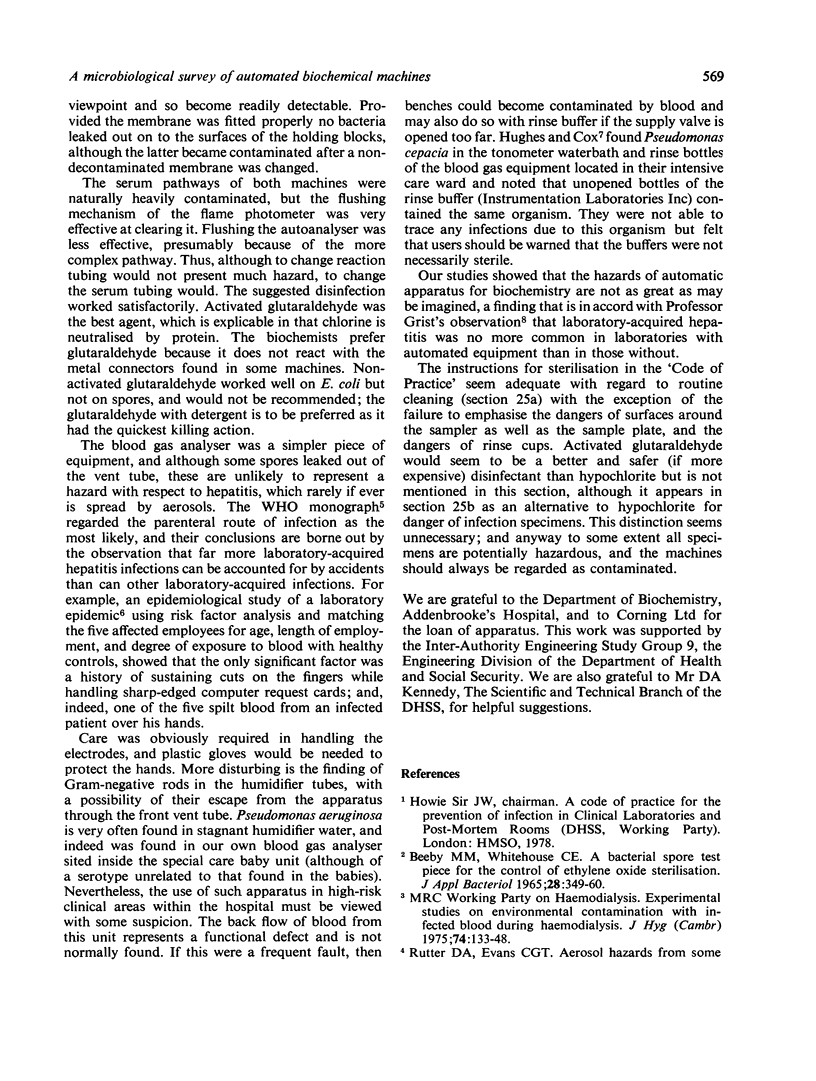Abstract
The potential microbial hazards to laboratory personnel from operating three pieces of automated laboratory equipment have been tested using challenges of bacteria in serum or water. Aerosols did not seem to be a hazard, and the recommended disinfection procedures seemed quite adequate, although 2% aqueous activated glutaraldehyde is to be preferred to hypochlorite. The use of plastic gloves for protecting hands when changing rinse cups and pH electrodes is recommended.
Full text
PDF




Selected References
These references are in PubMed. This may not be the complete list of references from this article.
- Beeby M. M., Whitehouse C. E. A bacterial spore test piece for the control of ethylene oxide sterilization. J Appl Bacteriol. 1965 Dec;28(3):349–360. doi: 10.1111/j.1365-2672.1965.tb02163.x. [DOI] [PubMed] [Google Scholar]
- Grist N. R. Hepatitis in clinical laboratories: a three-year survey. J Clin Pathol. 1975 Apr;28(4):255–259. doi: 10.1136/jcp.28.4.255. [DOI] [PMC free article] [PubMed] [Google Scholar]
- Huges W. T., Cox F. Are blood gas machines safe for use in the intensive care nursery? Pediatrics. 1977 Nov;60(5):760–761. [PubMed] [Google Scholar]
- Pattison C. P., Boyer D. M., Maynard J. E., Kelly P. C. Epidemic hepatitis in a clinical laboratory. Possible association with computer card handling. JAMA. 1974 Nov 11;230(6):854–857. [PubMed] [Google Scholar]
- Rutter D. A., Evans C. G. Aerosol hazards from some clinical laboratory apparatus. Br Med J. 1972 Mar 4;1(5800):594–597. doi: 10.1136/bmj.1.5800.594. [DOI] [PMC free article] [PubMed] [Google Scholar]


